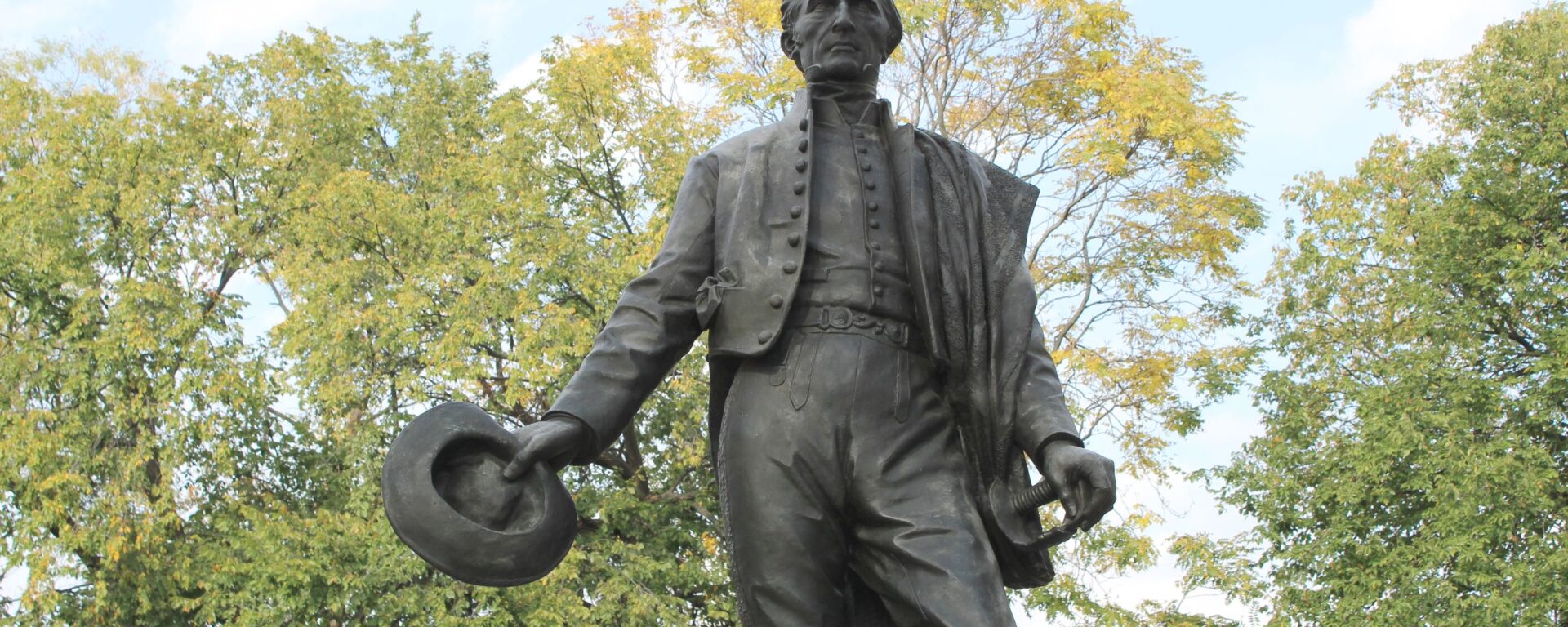“Liberty of America is my design and its attainment my only objective.”
In a small park at the intersection of Constitution and Virginia Avenues stands one of the early leaders of South American independence, José Gervasio Artigas Arnal. Crowned by a copse of trees and frequently flanked by tour buses, this 9-foot bronze statue is often overlooked despite the heavy traffic that swarms around it.

Given to the United States by Uruguay in the 1940s as a gesture of goodwill, the statue was officially dedicated in June of 1950 in a ceremony attended by Uruguayan ambassador Dr. Alberto Domínguez Cámpora, the first Secretary General of the Organization of American States Alberto Lleras Camargo, and U.S. Secretary of State Dean Acheson.
The sculpture is a recasting of one by Uruguayan artist Juan Manuel Blanes. It was originally cast in 1898 and is based on his painting Artigas en la puerta de la Ciudadela. Funds for the statue were raised primarily from school children in Uruguay. Identical statues can be found across the Americas, including in a small town in Minnesota named for the Uruguayan capitol, Montevideo.

Artigas en la puerta de la Ciudadela
Artigas never traveled to the United States but he was familiar with our government and based his proposed constitution on the Massachusetts Constitution of 1780, which is the oldest constitution in continuous effect in the world and was the model for the U.S. Constitution. Artigas is often remembered as the father of Uruguay; however, he did not struggle for the creation of the country, but rather a federation encompassing all of the former Spanish Viceroyalty of the Río de la Plata (Argentina, Uruguay, Paraguay, and Bolivia).

His biggest struggle was against the government of Buenos Aires, which advocated for centralized control of the newly liberated lands, while Artigas wanted a federal system similar to the United States. When it became clear that Buenos Aires would not implement a federal system, Artigas captured the city of Montevideo and established the autonomous Federal League in what would eventually become Uruguay.

The Federal League would face many more struggles before it would become Uruguay. It fought another war against Buenos Aires and a losing war against Portugal. During these wars Artigas was betrayed by his generals and was forced to flee to Paraguay, where he would die in exile. Today Uruguay is one of the most peaceful and equitable countries in South America, and Artigas is remembered as a national hero for his dedication to the principles that made it so.

Resources used for this article:
https://en.wikipedia.org/wiki/Jos%C3%A9_Gervasio_Artigas
https://en.wikipedia.org/wiki/General_Jos%C3%A9_Gervasio_Artigas
https://www.newspapers.com/newspage/53453829/
